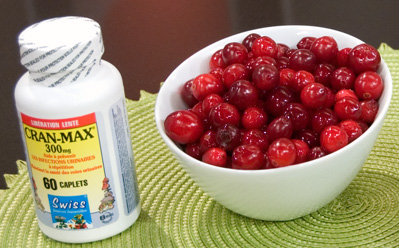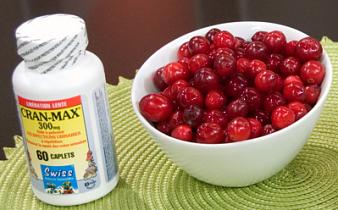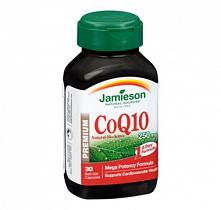Anti-Aging through Network Antioxidants - The Top Five

At one time, the only antioxidants we ever heard about were vitamins C and E. But suddenly, antioxidants are everywhere, with names we hear and immediately forget: canthaxanthin, xanthones, chicoric acid, luteolin, isorhamnetin, and so on. There are so many antioxidants known today that they are grouped by types, the names of which are equally formidable: polyphenolics, phenolic acids, esters, polymers…not to mention the like-sounding flavones, flavonols, flavanones, and isoflavones. Due to an explosion in scientific research into antioxidants, we may hear of hundreds more – so many that you could never keep track of them all. But only five antioxidants are superstars. So which ones do you really need and why? Some foods are chock full of antioxidants that work once to neutralize free radicals and then turn into free radicals themselves. But a small family of familiar antioxidants works synergistically, recycling each other so they keep on working continuously. Network Antioxidants Antioxidants are food substances that slow or prevent oxidative damage. When our cells use oxygen, they produce by-products called free radicals, which cause cellular damage. Antioxidants neutralize free radicals, reducing this damage. The relationship between oxidation and antioxidants in the body is complex and little understood. But oxidative damage has been linked to the development of heart disease, cancer, diabetes, macular degeneration, and even the signs of aging itself. Eating a variety of different foods, especially those with the brightest colours, is one way to get many diverse antioxidants. But research has shown that five antioxidants – just five out of thousands – stand out as superior to the others. In fact, these ‘network antioxidants‘, as they are known, work best as a team. Each of them mops up even more oxidative free radicals when they are in the body at the same time as other members of the network. Each serves a different function and enhances the activity of the others. Most antioxidants become useless after they have neutralized a free radical, but the network antioxidants rescue and revive each other in an ongoing recycling process. The five network antioxidants are glutathione, alpha lipoic acid, coenzyme Q10 (CoQ10), vitamin C, and vitamin E. How Network Antioxidants Work? After it has quenched a free radical, vitamin E becomes a weak free radical itself. However, either vitamin C or CoQ10 can recycle this spent free radical vitamin E back into its antioxidant form, ready to neutralize more free radicals. Glutathione and vitamin C also become weak free radicals after disarming free radicals. But alpha lipoic acid (ALA) can recycle them back into their active antioxidant form. In fact, vitamin C can also clean and recycle both spent glutathione and spent vitamin C. This rescue-and-revive cycle prolongs the lifespan of these antioxidants and makes them – together – a virtual powerhouse. Each has a job to do. Cells are comprised of a fatty membrane encasing a watery interior. The fat-soluble antioxidants vitamin E and CoQ10 protect the membrane from oxidative damage. On the other hand, the water-soluble nutrients vitamin C and glutathione guard the interior from free radicals. ALA is unique in that it is the only nutrient that has free access to both the cell’s fatty membrane and its watery interior, and it revives the other four network antioxidants it finds in each zone. Glutathione Glutathione is a key defender against free radicals, but levels of this network antioxidant start declining around age 40. Studies have found that there are at least ten different carcinogens that are susceptible to attack by glutathione. This antioxidant bonds with the toxin and with the enzyme glutathione transferase to neutralize it. Then, the resultant compound is removed from the cell and eliminated from the body through urine or bile. Over time, the accumulation of environmental toxins, processed foods, and chemical exposure wears down our cells’ ability to make glutathione. About 50% of people aged 65 and older have a deficiency of glutathione, with a greater risk of lung, skin, bladder, and prostate cancer. Too little glutathione means lipid (fat) peroxidation goes unchecked, toxins can enter the body’s cells, radiation damage is not repaired, and there is reduced DNA replication; in other words, cancer could be around the corner. The problem with glutathione supplements is that there is some evidence that glutathione molecules are too large to be absorbed through the intestinal walls. Also, some glutathione is broken down by digestion, failing to reach the bloodstream in the correct tripeptide form. So how do you boost glutathione levels? First, take supplements of alpha lipoic acid (see next section). Second, consume plenty of foods rich in this antioxidant. Glutathione-rich foods include walnuts, avocados, asparagus, cauliflower, okra, broccoli, tomatoes, squash, and potatoes. High levels are found as well in certain fruits: strawberries, peaches, apples, bananas, melons, and citrus. Third, eat foods that stimulate the body to make its own glutathione. These include Brussels sprouts, cabbage, spinach, rockmelon, and watermelon. Finally, be sure to consume foods rich in cysteine, the basic building block of glutathione. Cysteine is found in whole grains, dairy products, eggs, meat, poultry, fish, and beans. Alpha Lipoic (ALA) ALA is not only the most efficient when it comes to increasing glutathione levels, but is also the only network antioxidant that is both water- and oil-soluble, allowing it to repair other network antioxidants wherever they are, whether inside the cells or in the outer membrane. ALA protects against heart disease and stroke, and can lower cholesterol by up to 40 percent. It also prevents the oxidation of harmful LDL cholesterol that leads to atherosclerosis. In diabetics, ALA normalizes blood sugar levels and protects against glycation, the process leading to complications such as cataracts and heart, nerve, and retinal damage. It fights brain aging and memory loss, and neutralizes toxic minerals such as the cadmium in cigarette smoke, mercury in amalgam dental fillings, and lead in polluted air. Levels of alpha lipoic acid diminish with age. By mid-life, levels may serve basic needs, but become too low to harvest all of the antioxidant power that ALA offers. Most foods contain ALA – especially kidney, heart, liver, spinach, and broccoli – but the amount in any food is extremely low. Because it takes 10 tons of liver to yield 30 mg of ALA, all supplemental ALA is synthesized. Supplements are the best way to boost ALA levels, in dosages of 50 mg twice daily. If blood sugar control is needed, 300 to 600 mg daily may be taken. Also, ALA is regenerated by the network antioxidants, vitamins C and E. Coenzyme Q10 (COQ10) This oil-soluble antioxidant is involved both in energy production at the cellular level and in mopping up the free radicals that are produced at the same time. It has been suggested that the age-related decline in CoQ10 levels is responsible for many age-related diseases, such as heart disease, cancer, and Alzheimer’s. In mice, low levels of CoQ10 were linked to reduced lifespan. Some believe that recovery from breast cancer is hampered in bodies that cannot produce enough CoQ10. This coenzyme seems to boost the effectiveness of the immune system’s disease-fighting T-cells, which serve to eliminate cancer cells. Brain function depends on brain cells’ production of energy, which CoQ10 enhances, slowing down and even reversing age-related brain disorders such as Alzheimer’s, Parkinson’s and Huntington’s. In one mouse study, drugs were injected that are designed to kill mitochondria – energy machines in cells – and thus destroy brain cells; but when CoQ10 was administered with the drug, brain damage was reduced and lives were extended. CoQ10 levels drop with age. Worse, two drug types – statins for high cholesterol, and beta-blockers ending in “lol” for blood pressure – deplete CoQ10. CoQ10-rich foods include meat, fish, cold pressed vegetable oils, parsley, perilla, and avocado. Frying reduces CoQ10 in oils by up to a third. Consider supplements in dosages of 50 mg daily. Vitamin C This antioxidant boosts immune function and protects DNA from free radicals, curbing cancer. It dramatically reduces an individual’s risk of dying from cancer or heart disease. And vitamin C is essential for collagen production, which helps keep skin youthful. Above all, it replenishes the other network antioxidants. Most fruits and vegetables contain some vitamin C – especially kakadu plum, camu camu, Indian gooseberry, blackcurrant, red peppers, and hot chilies – as does beef liver and oysters. Consider supplements of 500 to 1,500 mg a day. Vitamin E As well as protecting against skin aging from ultraviolet radiation, vitamin E reduces the risk of stroke, heart attack, Alzheimer’s, prostate cancer, and breast cancer. It relieves symptoms of arthritis and other inflammatory diseases. But in the presence of the other network antioxidants, it replenishes and recycles them. E-rich foods include seeds, nuts, seed and nut oils, green leafy vegetables, tomato products, pumpkin, sweet potato, mangoes, asparagus, papayas, olives, and the bran of wheat, oats, and rice. Supplements of natural vitamin E, in the form of mixed tocopherols, can be taken in dosages of 400 to 800 IU daily. The Network Helpers Some nutrients play a supporting role. For instance, selenium is an essential component of various enzymes used by the antioxidant network. And flavonoids help recycle vitamin C. The mineral selenium is not an antioxidant but it supports the network antioxidants. For example, it works in synergy with vitamin E, making a powerful combination. Selenium is also an essential component in various enzymes used by the antioxidant network, including glutathione peroxidase and thioredoxin reductase, which reactivates and recycles vitamin C. Selenium is involved in the antioxidant enzymes responsible for detoxifying rancid fat in membranes. Also, with selenium’s help, vitamin E protects lipoproteins against oxidative damage more effectively. Blood platelets contain the greatest concentration of selenium of any body tissue, suggesting that high levels of selenium may prevent blood clots. This network helper’s role in heart disease prevention is complex but numerous studies have linked low consumption of selenium-rich foods and low blood levels of selenium to an increased risk of stroke and some cancers. Selenium plays a key role in thyroid function. It is a cofactor for the three known thyroid hormone enzymes. How do you ensure a proper intake of selenium? First, maintain a good vitamin E intake. A deficiency of selenium can be induced by increased oxidative stress brought on by a deficiency of vitamin E, one of the network antioxidants. Second, food sources include Brazil nuts, garlic, onions, wheat germ, red grapes, broccoli, tuna, beef, cod, turkey and egg yolk; but the selenium content of these foods varies dramatically depending on whether it was grown or raised in an area where soil is selenium-rich or selenium-poor. (Do not eat too many Brazil nuts as they may contain extremely high and potentially dangerous selenium levels.) Third, you can take selenium supplements in dosages of 50 to 100 mcg daily – but no more because excessive intake can be toxic. Flavonoids are not a member of the network antioxidants but they interact with the network, recycling vitamin C back into its active form after it has neutralized free radicals. By boosting vitamin C, it supports the cleaning and recycling of vitamin E, boosting vitamin E levels, which in turn means greater protection for all parts of the cells. Flavonoids also help regulate production of nitric acid, which is a signalling protein that switches genes off and on; regulates blood flow by controlling the muscle tone of blood vessels; modulates communication between brain cells; and fights tumour cells and infections. Some of the many key flavonoids include proanthocyanidin, polyphenols, elegiac acid and curcumin. Proanthocyanidin protects small blood vessels, thus improving microcirculation to the eye and preventing eye diseases. Rich sources include blueberries and bilberries. Polyphenols regenerate vitamin C. They guard against heart disease by preventing oxidation of LDL (bad) cholesterol and help prevent several types of cancer. Red wine and all types of tea contain high amounts of polyphenol. Elegiac acid prevents toxins from causing mutations in genes, which helps prevent the development of cancer cells. This flavonoid is available in raspberries and strawberries. Curcumin can block cancer-causing chemicals. It is found in the herb turmeric. There are numerous other flavonoids, all supporting the antioxidant network and all found only in plant foods. Some great food sources of flavonoids include all citrus fruits, acai berries, ginkgo biloba, red onions, parsley, tea, red wine, sea-buckthorn berries and cocoa. Internet site reference:
Comments
There are 0 comments on this post
















